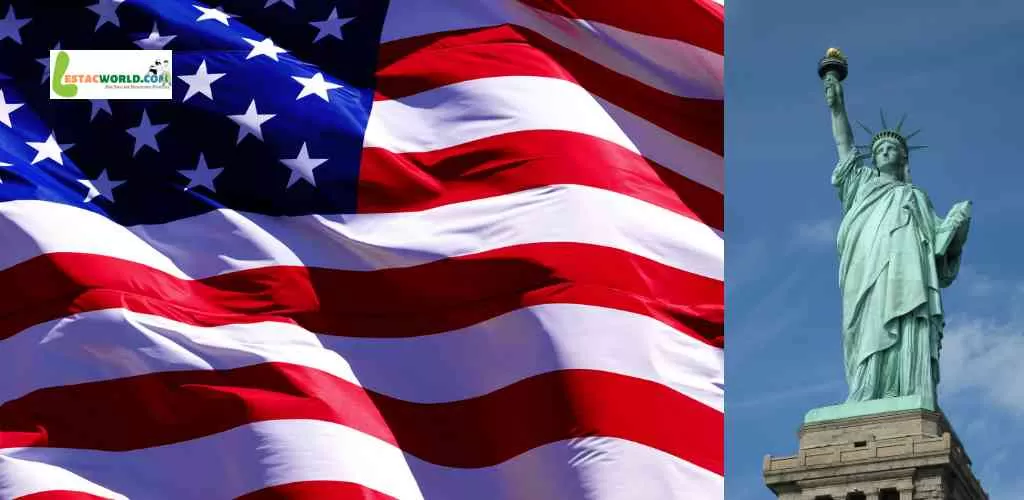Traveling to the United States is quite a long journey, and it is tempting to see as much as you possibly can. It is recommended to stick to a few states or a specific region of the U.S., as there are endless things to do in such a massive country. Visiting the USA from another country can be intimidating and scary, especially if it is your first time. Below, we have written out a list of some of the top travel tips for the United States to help make your adventure abroad a bit easier.
Visa Requirements for USA
Travelers planning a trip to the United States should be well-informed about the entry requirements. Here is an overview of the visa requirements and related information:
US Visa Waiver Program (ESTA)
The US Visa Waiver Program, known as the Electronic System for Travel Authorization (ESTA), enables citizens from 39 countries to visit the US for up to 90 days without a visa. Eligible countries primarily include those from the European Union, Australia, New Zealand, Japan, Taiwan, South Korea, Singapore, and a select few others. The 90-day period starts upon entering US territory, encompassing states like Hawaii, Puerto Rico, and other US territories. It also covers time spent in Canada, Mexico, Bermuda, or Caribbean islands if the journey began through the United States.
ESTA is mandatory for air and cruise ship arrivals but not required for overland or local ferry entries (e.g., between Vancouver, Canada, and Washington State). ESTA is valid for up to two years and allows multiple trips, each lasting a maximum of 90 days. It is a cost-effective and efficient process, typically taking around 20 minutes to complete. Applying for ESTA well in advance, preferably at least 72 hours before departure, is recommended. Travelers should have their ESTA and approval number readily available during check-in at the time of departure.
Longer Stays or Ineligibility for ESTA
Travelers desiring a stay exceeding 90 days in the United States or those not eligible for the ESTA program should consider obtaining a visa. The B-2 Visa, commonly known as the tourist visa, is the primary option for extended visits. These visas are typically more expensive than ESTA (approximately $160-$180 for many countries) and involve a more complex application process. Requirements for these visas differ based on the traveler’s citizenship.
To obtain accurate and up-to-date information on visa requirements and expedite the application process, travelers can utilize services such as iVisa. Travelers can also verify specific requirements through their country’s US embassy website or by visiting the embassy or consulate (e.g., Moroccan travelers can contact the US embassy in Rabat, Morocco).
Passport Validity
Ensuring your passport meets certain criteria is essential for entering the United States. To visit the US, your passport must have a minimum of six months’ validity remaining at the time of your travel. Passports with less than six months of validity left may lead to denial of entry to the US. Travelers should also confirm that their passport remains valid for the entire duration of their trip.
Planning Your USA Trip
When planning a trip to the United States, meticulous preparation is key to ensuring an enjoyable experience. Here are some guidelines to assist travelers in crafting their itinerary:
Assess Your Available Time
- Travelers must consider the duration of their trip, whether it spans a few days, weeks, or months.
- For short trips, focusing on a single city or nearby cities such as New York, Washington DC, or Boston is advisable.
- With a few weeks at your disposal, you can expand your journey by exploring the other coast, like flying from New York to Los Angeles, or embarking on a road trip through multiple states.
Tailor Your Experience to Your Timeline
- The activities and destinations travelers can explore in the USA depend on the duration of their stay.
- If your trip is a week or less, it’s best to immerse yourself in one city or state to fully savor its offerings.
- Longer trips exceeding a week provide the flexibility to explore multiple states and embrace the country’s diversity.
- Defining the focus of your trip is crucial. Whether it’s exploring national parks, visiting iconic cities, experiencing theme parks, going off-the-beaten-path on a road trip, camping in the wilderness, partaking in festivals and major events, or uncovering the nation’s historical trails, the possibilities are extensive.
Create a Detailed Itinerary
- While crafting your travel plan, make a comprehensive list of attractions and activities.
- Consider various elements such as free or budget-friendly things to do in each city or town, national parks of interest, best hiking and biking trails, city tours, and must-visit attractions and restaurants.
- Aim to accommodate all of these elements within your trip’s timeframe to assess if your planning is realistic.
- Factor in the estimated transportation times between locations. Tools like Google Maps Directions can be immensely helpful.
- It’s a good practice to incorporate some flexibility in your itinerary, allowing room for spontaneity and unexpected discoveries.
Consider Sightseeing Passes
- Many of the prominent attractions in the USA require an entrance fee, which can add up quickly to your travel budget.
- Travelers should contemplate acquiring a Sightseeing Pass, available for the entire USA or specific major cities.
- Sightseeing Passes offer options such as Day or Flex passes, enabling travelers to select attractions as they go along.
- Utilizing a Sightseeing Pass can result in significant savings and may provide the added benefit of bypassing admission lines.
Top Attractions and Experiences in the USA
The United States boasts an array of attractions and unique experiences for travelers to relish. Here are some of the top destinations to consider:
Top Places to Visit in America
- New York
- Los Angeles
- San Francisco
- Boston
- Seattle
- Maui
- San Diego
- New Orleans
- Chicago
- Miami
Diverse Experiences to Embrace
The recommendations below provide a glimpse into the wealth of activities and destinations that the United States has to offer to travelers.
Sports Games
Attending local sports games, whether it’s baseball, basketball, ice hockey, or football, offers a quintessential American cultural experience.
Amusement Parks
With over 500 theme parks across the country, visiting one can be an exhilarating family adventure when traveling with children.
National Parks
The USA’s vast and diverse landscape is home to numerous breathtaking national parks, including:
- Grand Canyon National Park
- Yosemite National Park
- Yellowstone National Park
- Glacier National Park
- Zion National Park
- Grand Teton National Park
- Olympic National Park
Navigating Travel Within the USA
When traveling the expansive and diverse landscapes of the United States, it’s essential to have a well-thought-out plan for transportation. Travelers will find various options for getting around, each with its advantages and considerations.
Bus Travel
Exploring cities and rural areas within the USA is made feasible by reliable bus operators such as Greyhound and Megabus. To make the most of these options:
- Book Early for Savings: Booking bus tickets in advance often leads to substantial cost savings, with some routes even offering $1 fares. Similar savings opportunities exist when traveling by Amtrak, the national train operator.
- Utilize Busbud: For a comprehensive overview of available bus and train routes at competitive prices, travelers are encouraged to use the Busbud platform.
Renting a Vehicle
For those desiring freedom and flexibility during their journey, renting a car or an RV is the preferred choice when road-tripping in the USA. Here are essential insights:
- Consider Renting a Car: Unless visiting major urban centers like New York, Chicago, or San Francisco, renting a car is advisable. Unlike Europe, vast portions of the country lack extensive public transportation, making a car essential for hassle-free movement.
- Search with Reliable Platforms: To find the best car rental deals, DiscoverCars.com, Kayak, and Skyscanner are recommended search platforms.
Car Rental Checklist
When securing a rental car, travelers should take into account the following factors:
- Total Rental Cost: The initial search price typically excludes taxes and insurance, so it’s vital to factor in these additional expenses.
- Insurance Options: Rental companies often promote premium insurance coverage above the minimum mandatory level. Assess your situation to determine if this extra coverage is necessary.
- Fuel Prices: Stay informed about prevailing fuel prices in the states you intend to visit. Calculate potential fuel costs based on your estimated mileage and the vehicle’s fuel efficiency.
- GPS Availability: Inquire about GPS rental costs, but consider using local SIM cards with data for smartphone navigation as a cost-effective alternative.
- Additional Driver Fees: Add all potential drivers to the rental agreement for added security in case of an accident.
- One-Way Rental Costs: If your journey involves dropping off the rental car in a different city, be aware of any associated fees.
- Toll Information: Verify the tolls along your route in advance, as these fees can accumulate rapidly.
- Documentation: Prior to leaving the rental lot, document and photograph all visible car defects. Also, capture the fuel level and mileage on the dashboard to avoid disputes.
Long-Distance Travel
The United States is a vast country, making domestic travel challenging over extended distances. To navigate efficiently:
- Consider Air Travel: For cross-country journeys, opting for air travel is a cost-effective and time-saving choice. Affordable flights are often available.
- Train Travel: While train options exist in the United States, they can be relatively expensive and limited in scope.
- Car Travel: Embarking on a road trip via car remains one of the most effective ways to explore America, providing opportunities to discover its abundant natural and cultural attractions. Numerous car rental providers offer attractive deals and rates.
Road Trip Tips
For those venturing into remote regions, particularly in the Midwest, these guidelines ensure a smooth road trip:
- Be mindful of the distance between gas stations, as some remote areas have significant gaps. Keep your gas tank sufficiently filled for such stretches.
- If you’re traveling with an RV, note that Walmart allows free overnight parking in their lots for one night. Additionally, the country offers various free or budget-friendly campgrounds.
- Be aware that overnight RV parking is restricted at many roadside rest stops in various states, so it’s wise to research how these regulations apply to your journey.
- Travelers should also note that the minimum age for car rentals in the United States is 25, and vehicles are driven on the right side of the road in this country.
- If you need to park your vehicle at a domestic airport within the USA, consider using ParkFellows.com to easily compare and find cheap airport parking.
Planning Your Finances
When contemplating the financial aspects of a trip to the United States, the cost varies significantly depending on your preferences and budget. As of September 11, 2023, these are approximate budget ranges for a one-week visit:
- Low Budget: For those seeking a frugal travel experience, expect to spend between US$750 to US$1200 per person.
- Mid-Range Budget: Travelers with a moderate budget should anticipate expenses averaging around US$2000 per person.
- Luxury Budget: If you’re inclined to indulge in lavish accommodations and upscale experiences, be prepared to allocate US$5700 or more per person for your one-week sojourn.
Traveling within the United States for an entire month offers a chance to explore this vast and diverse nation on a more extended basis. Your total expenses for the trip will hinge on several factors, such as the activities you do, accommodation preferences, and transportation choices. These varying factors allow you to tailor your journey to suit your financial means and desires, ensuring your month-long exploration of America is both enjoyable and economically manageable.
Sales Tax
In the United States, prices displayed at supermarkets, stores, restaurants, hotels, and other businesses typically exclude sales tax. Each state sets its own sales tax rate, which can range from 7% to around 11.5% or more. Moreover, resorts often impose substantial “resort fees” that may not be evident when booking. These fees can vary widely, from $10 to over $100. It’s essential for travelers to carefully examine the fine print or the “not included” section of advertised prices to account for these additional taxes and fees.
Tipping Culture
In the United States, tipping is an integral part of the service industry. Service providers such as cab drivers, delivery personnel, valets, porters, room service attendants, and especially waitstaff and bartenders rely on tips, primarily because many of them earn wages below the federal minimum wage.
The customary tipping practice typically ranges from 15% to 20% of the bill. While tipping is expected, travelers are not legally obligated to do so. A general guideline is to tip 15% for average service and increase to 20% for exceptional service. For subpar service, it’s acceptable to tip 10% or less, depending on the extent of the disappointment.
Additional tip suggestions within the hospitality industry include:
- Concierge: The amount may vary depending on the complexity of your request.
- Bartenders: Generally, $1-2 per drink.
- Housekeepers: A typical range is $1-5 per night.
- Valets: $1-5 each time the valet retrieves your car.
- Hotel porters: $1-2 per bag they handle.
- Doormen: A few dollars as a gesture of appreciation, especially if they assist in hailing a cab.
- Taxi drivers: Around 10-15% of the fare.
- Shared shuttle drivers: Approximately $2-3 per person.
- Food delivery: Typically $1-$4, with the amount varying based on the distance from the restaurant to your accommodation.
Before tipping at restaurants, always check your bill, as some dining establishments automatically include gratuity in the total. Additionally, certain services may already encompass a “service charge,” which is equivalent to a tip.
Travel Insurance
While travelers may believe they won’t need travel insurance, it’s strongly advisable to obtain it. Unforeseen circumstances, such as medical emergencies, can occur during a trip. Travel insurance provides financial protection and peace of mind. The U.S. medical system, known for its inefficiency and high costs, can lead to exorbitant medical bills, even for seemingly minor medical issues.
By having travel insurance with medical coverage, travelers safeguard themselves from unexpected medical expenses. This precautionary measure is especially vital when visiting the United States, where healthcare costs are notably high. It’s better to be prepared with insurance coverage and not need it than to be caught off guard by unforeseen medical bills.
Things to Pack
Preparing for a trip to the United States can be a daunting task. To alleviate the stress of packing, a concise checklist is presented below, outlining the key items to include in your travel preparations:
- Universal Power Adapter: Ensure your electronic devices remain charged and operational.
- American/Australian Currency: Carrying some local currency is beneficial for small expenses.
- Copies of Travel Documents: Duplicate copies of your travel documents and itineraries serve as a valuable backup.
- Portable Charger: A portable charger ensures your devices stay powered on throughout your journey.
- First Aid Kit: A basic first aid kit is a sensible inclusion for unexpected health needs.
- Versatile Clothing: Pack a variety of clothing suitable for diverse weather conditions and layering options.
- Backpack: A backpack is convenient for day trips and carrying essentials.
- Reusable Water Bottle: Stay hydrated and eco-friendly with a reusable water bottle.
- Comfortable Walking Shoes: Comfortable, supportive footwear is essential for exploring.
By adhering to this well-rounded packing list, travelers can embark on their American vacation well-prepared and stress-free.
Quick Tips
Before you embark on a journey to the USA, be sure to read some of these short and sweet tips so that you are prepared for anything and everything:
- Notify Your Bank: Inform your bank about your travel plans to prevent card issues during your trip.
- Emergency Number: In the US, dial 911 for emergencies.
- Imperial System: The US uses the Imperial system, which means measurements are in inches, feet, miles, pounds, and Fahrenheit for temperature.
- Driving: Remember that driving is on the right side of the road in the US.
- Time Zones: The US spans six time zones, so check your destination’s time zone when booking flights and making plans.
Visiting the United States offers a world of opportunities, so prepare well, and make the most of your adventure!




